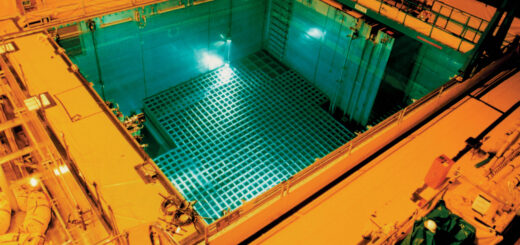Science needs girls to change the world

As of 2018, 52% of Scotland’s workforce is made up of women. Comparing this with the global average of approximately 40%, this is high. However, when looking at STEM subjects there seems to be a big imbalance, with girls in high school favouring biology and being underrepresented in physics, engineering, and computer sciences. Despite the imbalance, girls do excel in these subjects, with the percentage of girls obtaining an A or B at Higher in 2018 being 10% higher than boys in engineering science, and 8% higher in computer science1.
When looking at girls who go on to further education in STEM, they tend toward the more biological subjects such as medicine, dentistry and veterinary studies, leaving the boys to fill out the physics and computer-based subjects. This continues post-education, and when these women join the workforce they continue to be underrepresented in these same fields; only 19% of Scottish engineers are women, but 82% of those in medicine and dentistry are female. So why do girls seem to stick to the roles traditionally thought to be more ‘caring’? Why are they not drawn to the innovative and inventive roles to the same extent, and why do a lot of girls avoid some of the sciences altogether? It could be due to the innate sexism faced by girls from a young age or because girls may be put off of entering male-dominated fields. An example of this sexism can be found from a ‘Draw a Scientist’ test performed in 2008 where 34% of the scientists drawn by elementary school children were women, the rest were men2.
As a physics student, from a poorer part of the country, I thought I would look back to my roots and see if my upbringing, specifically my parenting, was different from my peers who didn’t go into science. I was always encouraged by my parents to play outside, to explore my surroundings and to question the world around me. I remember on multiple occasions having bowls or jars that I would fill with mud and leftover food, then go outside and dig for ‘pet worms’. I would tear apart old electrical equipment to study the inner workings, and would spend Friday nights sitting in the garden with my dad with a raging fire in the fire pit talking about the stars and the origins of life, and occasionally testing the flammability of household objects (Note: rubber-soled shoes could make excellent rocket fuel, watch this space). My Dad told me he worried about letting me out to play, he said “I couldn’t sit at peace because we lived on
My whole childhood I had wanted to be a vet, but once I learned that it wasn’t just an excuse to cuddle dogs all day and you had to do some pretty gruesome things that idea was put to bed. The interest in physics for me was mainly driven by my high school physics teacher: an amazing teacher with 3 young daughters himself, he wanted to really foster an interest in everyone in his class but especially the girls, as he was well aware that they were underrepresented. However, I realise I am one of the lucky few who have been encouraged in this way. After reaching out to my followers on Twitter, asking if anyone has ever been discouraged from studying STEM subjects, I got a few concerning replies. One girl said she was glad she was studying a ‘softer science’ (psychology) due to the conversations she had seen in computer scientist friends group chats, saying that the way they talk about women is “gross”. Another woman said that in 2017 she had a professor who told her that “women have a natural disadvantage when it came to understanding science” and she would be cut off whenever they tried answering a question in order to “mansplain” what she just said. One of particular note was from Dr Jana Schniete, a Postdoctoral Researcher at the University of Strathclyde, who told me that she had a math and physics teacher who would tell the girls “Don’t worry too much, you are girls, so you will never be very good at this” whenever they asked questions in class. When girls are facing this kind of ‘encouragement’ from professionals who are supposed to make them fall in love with their subject and empower them, what chance do they have?
Young people are very impressionable, so it is important for teachers and parents not to discourage girls from science. Saying that scientists are ‘nerdy’ or that they’re ‘geeks’
I also interviewed Professor Gail McConnell, Director of the Centre for Biophotonics at the University of Strathclyde. She has developed the Mesolens4, a giant confocal microscope. Confocal microscopy allows you to see inside tiny organisms at a super detailed level – you can even see the nucleus within cells. The Mesolens lets you do this on a much bigger scale, and has been used to produce 3D images of insects, embryos and whole mouse organs. I asked professor McConnell if she had advice for any young budding scientists, she said “Stereotypes be damned: science is for everyone. Innovation demands new and different ways of working, and diverse, energetic teams are more likely to provide the combination of skills and perspectives needed to succeed”.
Great advice; it doesn’t matter what your gender, sexual orientation or racial background is, science needs the next generation to get thinking and to help the world to be a better place. So let’s make the workplace an appealing and welcoming place for women in the underrepresented sciences so that they are not put off of the male-dominated fields, and let’s introduce better ideas on what can be done in all fields of science from an early age5. All sciences can have an impact on this world and we need the most diverse team possible to change it!
This article was specialist edited by Katrina Wesencraft and copy-edited by Kirstin Leslie.
References
- For more information on these figures check out this link https://onescotland.org/wp-content/uploads/2018/10/What-we-already-know-STEM.pdf
- You can find out more about this here https://www.theatlantic.com/science/archive/2018/03/what-we-learn-from-50-years-of-asking-children-to-draw-scientists/556025/
- To check out more cool women in science take a look at this website https://www.globalcitizen.org/en/content/17-top-female-scientists-who-have-changed-the-worl/
- Check out some Mesolens images here: http://www.strathclydemesolab.com/
- A great article that discusses this issue can be found here https://gendersociety.wordpress.com/2013/09/13/why-scientists-think-there-are-more-women-in-biology-than-physics/










